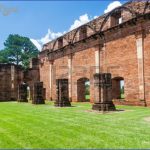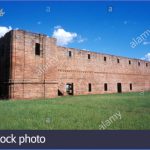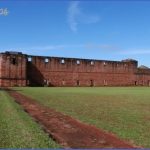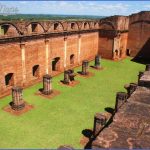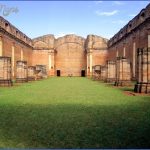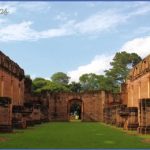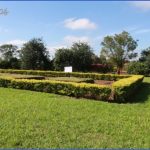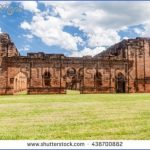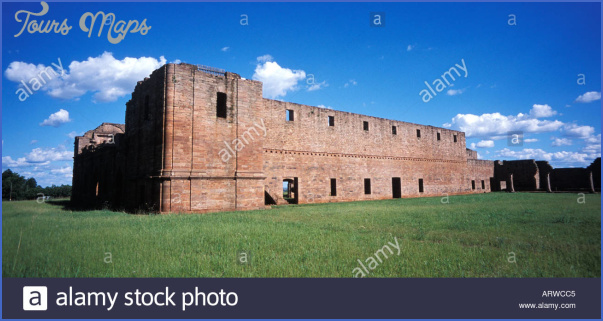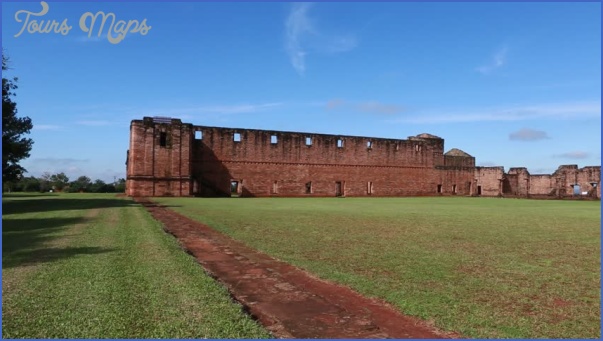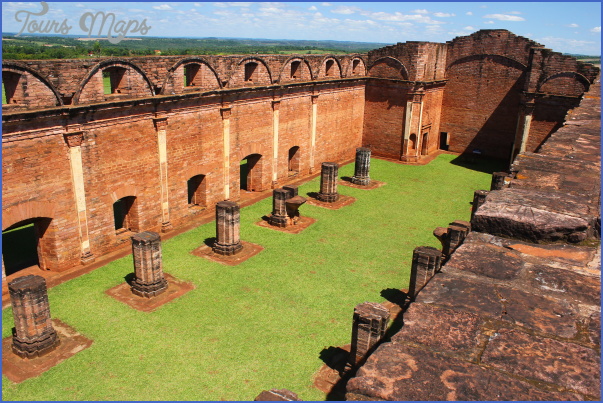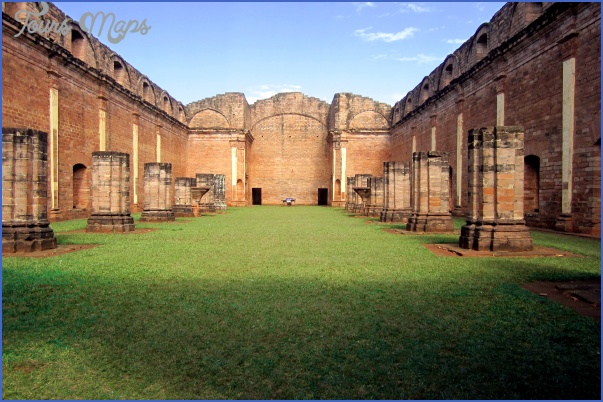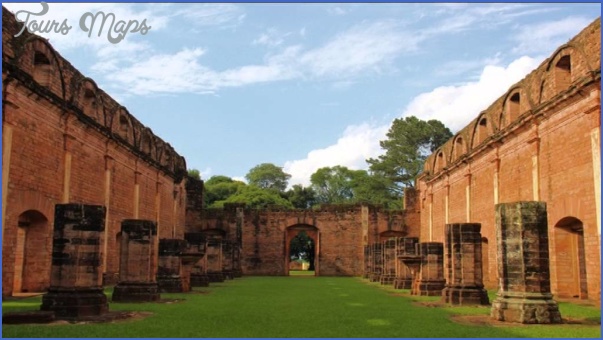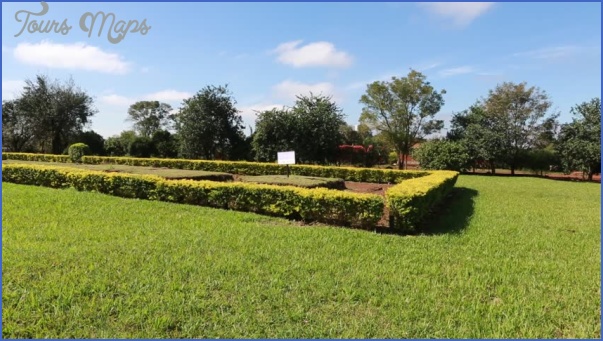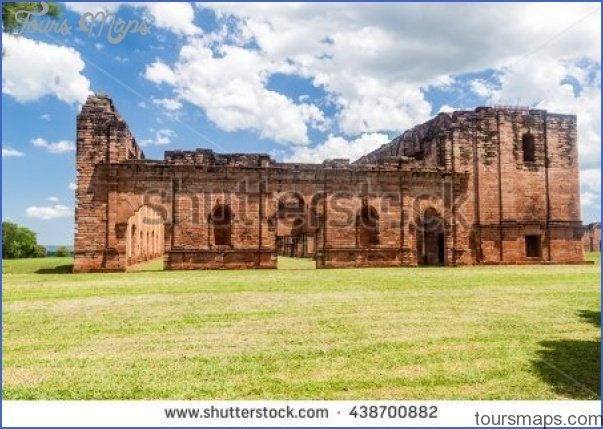Founded in 1685, the Jesus mission moved to current location in 1758, only nine years before the Jesuits were expelled from Paraguay. This was the last of the thirty missions to be built and, in fact, was never completed. It is said to have been home to over 3,000 indigenous.
Though not nearly as complete as the ruins of Trinidad or of San Cosme y Damian, Jesus is impressive in its own right. Built on a high point the mission, with its imposing church set against a beautiful backdrop of palm trees and rolling hills, has a mystical quality. The fact that it receives significantly less visitors than Trinidad only adds to the calm atmosphere.
The church, or iglesia mayor, is the mission’s principal remaining structure. Most visitors will first glimpse the church from the side before rounding the corner to the main entrance. From this angle the church, a fifty-nine-meter by twenty-four-meter building with eleven-meter high walls (of which only the upper portions were reconstructed) resembles a large fortress.
The main entrance to the church is flanked by niches adorned with passion fruit flowers, guavas, and palm and olive branches and topped with a papal insignia.
The church’s incomplete interior is the most picturesque part of Jesus. Where brown stone floors were meant to stand grows emerald green grass. Out of the grass jut two rows of seven large, incomplete columns. These were meant to support the roof – which was also never completed. To the right-hand side is a small area meant to hold the baptismal font – the walls are covered in original white stucco which is also visible in some of the decorative columns along the interior church walls.
Exiting the church (to the right) is the original stair case leading to the bell tower. Climb up for an excellent view of the remaining mission structures and landscapes beyond.
Running perpendicular to the back of the church are a series of rooms that were used as the school and workshops. Aside from the church these are the only other large remains of the mission. However vestiges of the indigenous dwellings to the right-hand side of what was once the main plaza in front of the church have been excavated. Summer 7am-7pm, winter 7am-5:30pm, Entry fee Gs. 25,000 valid for ruins of Trinidad and San Cosme y Damian as well. Guides: Lira Hein 0985 743 340.
Sidebar: The Jesus mission used to be linked to the neighboring mission of Trinidad. Together, they were referred to as Trinidad y Jesus. However, after the expulsion of the Jesuits it became aptly known as Jesus de Tavarangue which in Guarani means Jesus, the town that was going to be.
Jesus de Tavarangue Paraguay Photo Gallery
Maybe You Like Them Too
- The Best Cities To Visit in The World
- World’s 10 Best Places To Visit
- Coolest Countries in the World to Visit
- Travel to Santorini, Greece
- Map of Barbados – Holiday in Barbados

